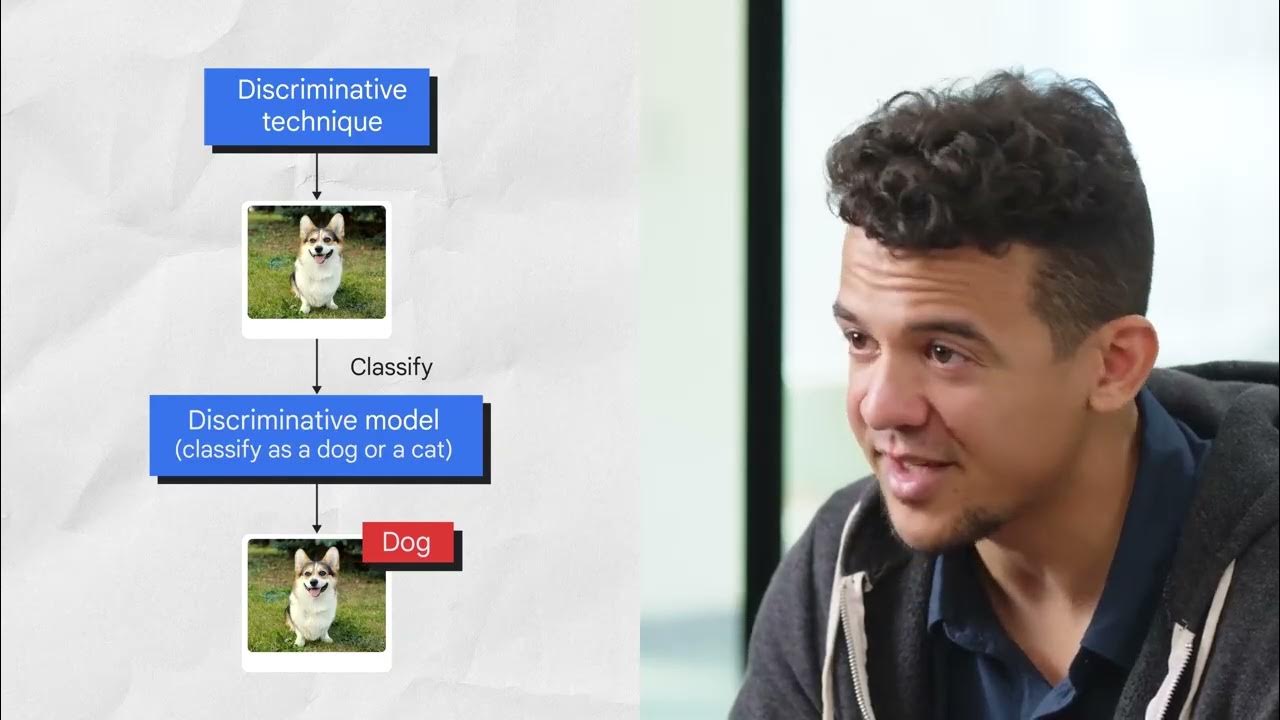U6-30 V5 Wie KI-Modelle trainiert werden V3
Summary
TLDRThis video explains how machine learning and generative AI work. It compares the process to teaching a child to recognize objects, like distinguishing between a cat and a dog. AI models learn by analyzing vast amounts of data to recognize patterns and make predictions. Generative AI goes a step further, not only learning from data but also creating new content based on the patterns it’s learned. The more data the machine receives, the better it can predict and generate precise results, showcasing the power of AI in transforming tasks across various fields.
Takeaways
- 😀 Machines become more intelligent by learning from data and improving their predictions, diagnoses, and task handling capabilities.
- 😀 The more data machines are exposed to, the more experiences they gain, which enhances their intelligence.
- 😀 Machine learning enables computers to perform tasks without being explicitly programmed, using algorithms and statistical models.
- 😀 AI models are trained similarly to how a child learns to differentiate between objects (e.g., a cat and a dog) by observing patterns and key characteristics.
- 😀 AI training involves exposing models to large datasets, such as images, text, and numerical data, which they analyze to find patterns and relationships.
- 😀 Through training, AI models develop generalizations and hierarchies that represent the underlying structure of the data.
- 😀 With enough high-quality data, AI models can distinguish between subtle differences in the data, enabling them to make classifications and predictions.
- 😀 As AI models process more data, they become more skilled in recognizing patterns and nuances, ultimately leading to expertise in specific tasks.
- 😀 Generative AI models not only learn from existing data but also have the ability to generate new data based on the learned patterns.
- 😀 The process of training AI models involves iterative learning, where models continuously improve their performance based on the data they encounter.
- 😀 Machine learning and AI have vast applications in various fields, including predictive analytics, diagnostics, and solving complex problems.
Q & A
How does machine intelligence improve over time?
-Machine intelligence improves as it gains more experience through additional data. The more data it is exposed to, the better it becomes at making predictions, diagnosing situations, and handling more complex tasks.
What is the role of algorithms in machine learning?
-In machine learning, algorithms and statistical models enable computers to perform tasks without explicit programming. These algorithms analyze data, recognize patterns, and help the machine learn from experiences.
How do AI models learn from data?
-AI models learn from data by being exposed to large amounts of information, such as images, text, or numbers. The algorithms then analyze patterns and relationships within this data to develop generalizations or hierarchies that represent it.
What is an example of how AI models are trained?
-An example of AI model training is teaching a machine to distinguish between a cat and a dog. Similar to teaching a child, you show the machine pictures of both animals and explain the key differences until it can easily identify them.
Why is data quality important in machine learning?
-Data quality is critical because the better the data, the more accurately the machine can learn. With high-quality data, AI models can develop expertise on the nuances in the data and make more precise classifications or predictions.
What kind of data do AI models use during training?
-AI models are trained on various types of data, including image data, text data, and numerical data. The machine processes and learns patterns from these diverse data types.
What does it mean for an AI model to develop a 'data hierarchy'?
-A data hierarchy in an AI model represents the way the model organizes and understands relationships within the data. It’s a structured system of generalizations that helps the machine make decisions or predictions.
How do generative AI models differ from other AI models?
-Generative AI models not only learn from data but also generate new data. They can create new images, text, or other types of data based on the patterns they have learned from the training data.
Can AI models develop expertise over time?
-Yes, AI models can develop expertise over time as they are exposed to more data. The more data they process, the more adept they become at understanding subtle patterns and making informed decisions or predictions.
How do AI models use their training to make predictions or classifications?
-Once trained, AI models use what they have learned about the patterns and relationships within the data to classify new data or make predictions based on similar patterns they've encountered before.
Outlines

هذا القسم متوفر فقط للمشتركين. يرجى الترقية للوصول إلى هذه الميزة.
قم بالترقية الآنMindmap

هذا القسم متوفر فقط للمشتركين. يرجى الترقية للوصول إلى هذه الميزة.
قم بالترقية الآنKeywords

هذا القسم متوفر فقط للمشتركين. يرجى الترقية للوصول إلى هذه الميزة.
قم بالترقية الآنHighlights

هذا القسم متوفر فقط للمشتركين. يرجى الترقية للوصول إلى هذه الميزة.
قم بالترقية الآنTranscripts

هذا القسم متوفر فقط للمشتركين. يرجى الترقية للوصول إلى هذه الميزة.
قم بالترقية الآن5.0 / 5 (0 votes)






